The Application of a Laser-Printed Miniature Five-Hole Probe in the End-Wall Flow Measurement of a Multistage Axial Compressor
Abstract
:1. Introduction
2. Calibration Strategy
2.1. Probe Structure and Angle Frames
2.2. Angular Space Division
2.3. Calibration Coefficients for Low Flow Angle
2.4. Calibration Coefficients for High Flow Angle
2.5. Calibration Results
3. Error Evaluation Based on Test Data
4. Application in End-Wall Flow Measurement for a Low-Speed Repeating-Stage Axial Compressor
5. Summary and Discussion
- Data reduction and error analysis of the miniature five-hole probe.
- 2.
- Application in end-wall flow measurement in a multistage axial compressor.
Author Contributions
Funding
Data Availability Statement
Acknowledgments
Conflicts of Interest
Nomenclature
| , | Static and total pressure coefficients |
| , , , | Pitch, yaw, cone, and roll angle coefficients |
| ,…, | Pressure measured at port 1, …, 5 |
| , | Total pressure at inlet and outlet |
| , | Dynamic pressure for low-angles and high-angles |
| Rotational speed at mid span | |
| Axial velocity | |
| , , , | Pitch, yaw, cone, and roll angle |
| Error between the measured and true value | |
| Density | |
| Flow coefficient | |
| Total-to-total pressure rise |
References
- Wisler, D.C. Aerodynamic effects of tip clearance, shrouds, leakage flow, casing treatment and trenching in compressor design—Blading design in the endwall region. In Lectures on Tip Clearance Effects in Axial Turbomachines; Von Karman Institute for Fluid Dynamics: Sint-Genesius-Rode, Belgium, 1985. [Google Scholar]
- Koch, C.C.; Smith, L.H. Loss sources and magnitudes in axial-flow compressors. J. Eng. Gas Turbines Power 1976, 98, 411–424. [Google Scholar] [CrossRef]
- Wennerstrom, A.J. Low aspect ratio axial flow compressors: Why and what it means. J. Turbomach. 1989, 111, 357–365. [Google Scholar] [CrossRef]
- To, H.-O.; Miller, R.J. The Effect of Aspect Ratio on Compressor Performance. J. Turbomach. 2019, 141, 081011. [Google Scholar] [CrossRef]
- Koch, C.C. Stalling Pressure Rise Capability of Axial Flow Compressor Stages. J. Eng. Power 1981, 103, 645–656. [Google Scholar] [CrossRef]
- Smith, L.H. Casing Boundary Layers in Multistage Axial Compressors. In Flow Research on Blading; Elsevier: Amsterdam, The Netherlands, 1970; pp. 275–304. [Google Scholar]
- Ren, X.; Gu, C. A numerical study on the tip clearance in an axial transonic compressor rotor. Appl. Therm. Eng. 2016, 103, 282–290. [Google Scholar] [CrossRef]
- Town, J.; Akturk, A.; Camci, C. Total pressure correction of a sub-miniature five-hole probe in areas of pressure gradients. In Proceedings of the ASME Turbo Expo 2012: Turbine Technical Conference and Exposition, Copenhagen, Denmark, 11–15 June 2012; Volume 1, pp. 855–861. [Google Scholar]
- Gilarranz, J.L.; Ranz, A.J.; Kopko, J.A.; Sorokes, J.M. On the Use of Five-Hole Probes in the Testing of Industrial Centrifugal Compressors. J. Turbomach. 2005, 127, 91–106. [Google Scholar] [CrossRef]
- Coldrick, S.; Ivey, P.C.; Wells, R.G. The Influence of Compressor Aerodynamics on Pressure Probes: Part 2—Numerical Models. In Proceedings of the ASME Turbo Expo 2004: Power for Land, Sea, and Air, Vienna, Austria, 14–17 June 2004; pp. 515–520. [Google Scholar]
- Li, J.; Du, J.; Geng, S.; Li, F.; Zhang, H. Tip air injection to extend stall margin of multi-stage axial flow compressor with inlet radial distortion. Aerosp. Sci. Technol. 2020, 96, 105554. [Google Scholar] [CrossRef]
- Yasa, T.; Paniagua, G. Robust procedure for multi-hole probe data processing. Flow Meas. Instrum. 2012, 26, 46–54. [Google Scholar] [CrossRef]
- Hall, B.F.; Povey, T. The Oxford Probe: An open access five-hole probe for aerodynamic measurements. Meas. Sci. Technol. 2017, 28, 35004. [Google Scholar] [CrossRef]
- Liu, B.; Qiu, Y.; An, G.; Yu, X. Utilization of Zonal Method for Five-Hole Probe Measurements of Complex Axial Compressor Flows. J. Fluids Eng. 2020, 142, 061504. [Google Scholar] [CrossRef]
- Gerner, A.A.; Maurer, C.L.; Gallington, R.W. Non-nulling seven-hole probes for high angle flow measurement. Exp. Fluids 1984, 2, 95–103. [Google Scholar] [CrossRef]
- Everett, K.N.; Gerner, A.A.; Durston, D.A. Seven-hole cone probes for high angle flow measurement Theory and calibration. AIAA J. 1983, 21, 992–998. [Google Scholar] [CrossRef]
- Babu, C.V.; Govardhan, M.; Sitaram, N. A method of calibration of a seven-hole pressure probe for measuring highly three-dimensional flows. Meas. Sci. Technol. 1998, 9, 468–476. [Google Scholar] [CrossRef]
- Pisasale, A.J.; Ahmed, N.A. A novel method for extending the calibration range of five-hole probe for highly three-dimensional flows. Flow Meas. Instrum. 2002, 13, 23–30. [Google Scholar] [CrossRef]
- Shaw-Ward, S.; Titchmarsh, A.; Birch, D.M. Calibration and Use of n-Hole Velocity Probes. AIAA J. 2015, 53, 336–346. [Google Scholar] [CrossRef]
- Mortadha, J.; Qureshi, I. Extending the usable range of the calibration map of a four-hole probe for measuring high flow angles. Flow Meas. Instrum. 2019, 65, 257–267. [Google Scholar] [CrossRef]
- Ericksen, A.L.; Gallington, R.W.; Rao, B.M. Rapid Calibration of Seven-Hole Probes; NASA Technical Memorandum 107040; National Aeronautics and Space Administration: Washington, DC, USA, 1995. [Google Scholar]
- Johansen, E.S.; Rediniotis, O.K.; Jones, G. The Compressible Calibration of Miniature Multi-Hole Probes. J. Fluids Eng. 2001, 123, 128–138. [Google Scholar] [CrossRef]
- Herrmann Schlichting, K.G. Boundary-Layer Theory; Springer: Berlin/Heidelberg, Germany, 2000; ISBN 3540662707. [Google Scholar]
- Crawford, J.; Michael Birk, A. Improvements to Common Data Reduction and Calibration Methods for Seven Hole Probes. J. Fluids Eng. 2013, 135, 031206. [Google Scholar] [CrossRef]

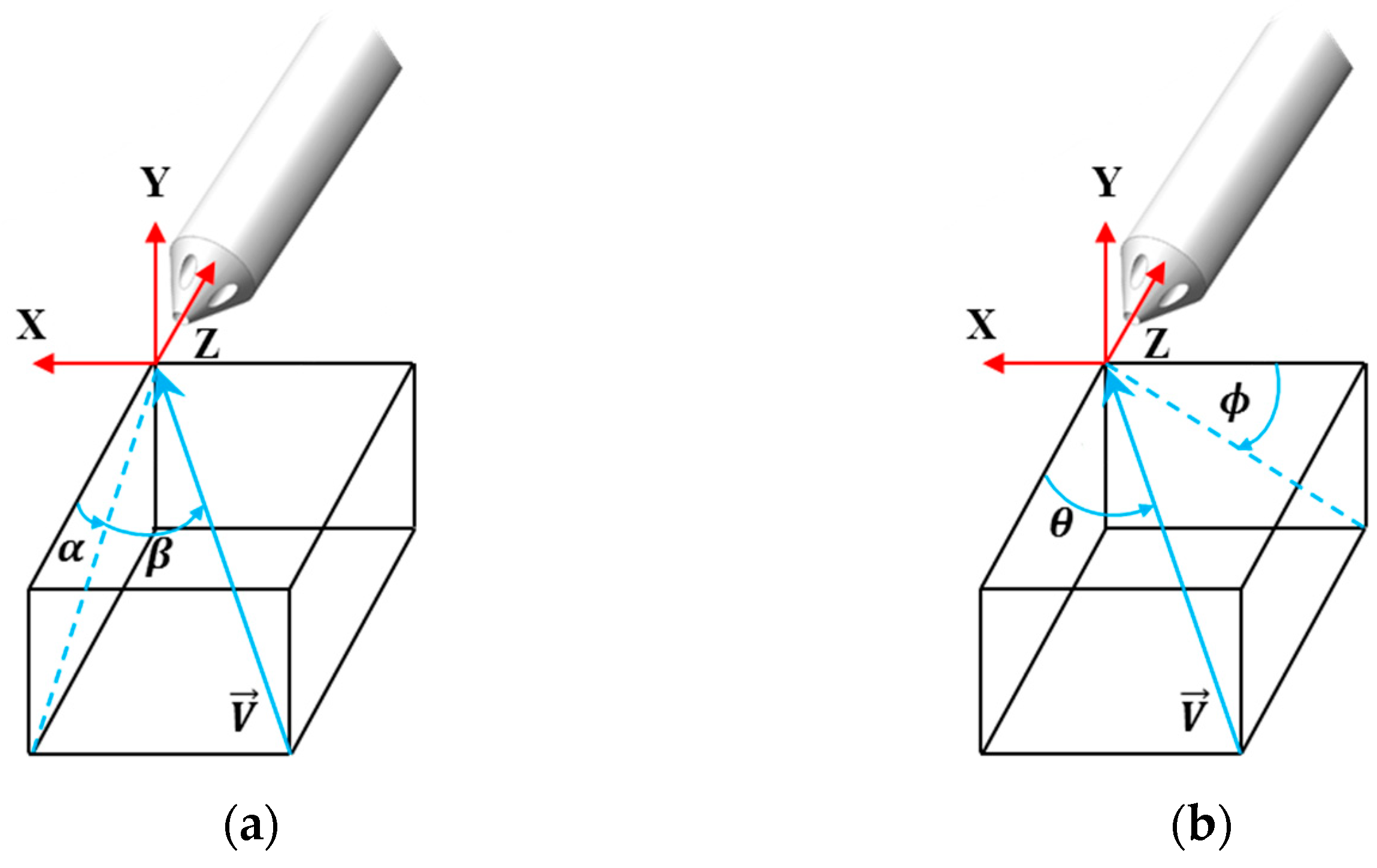
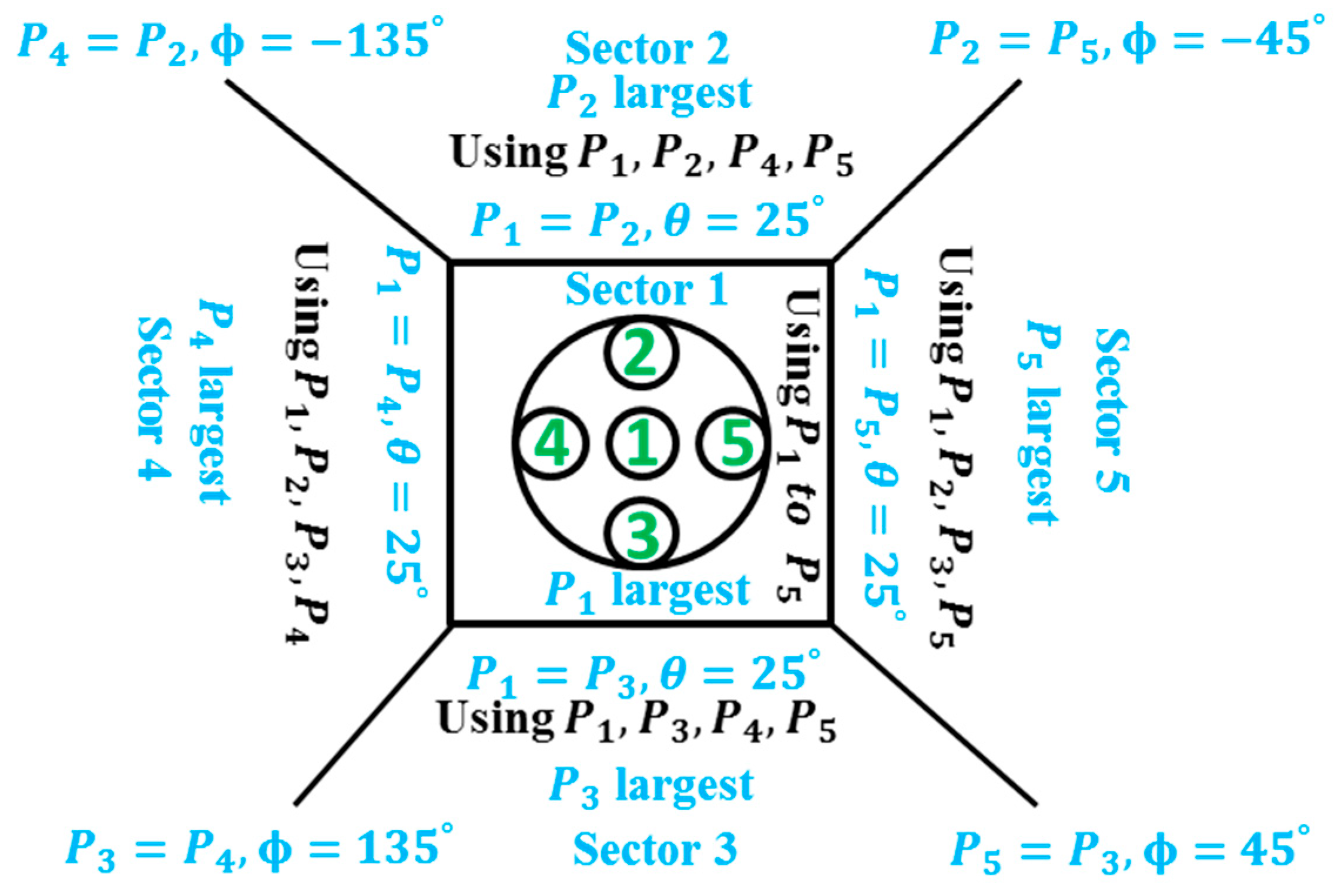
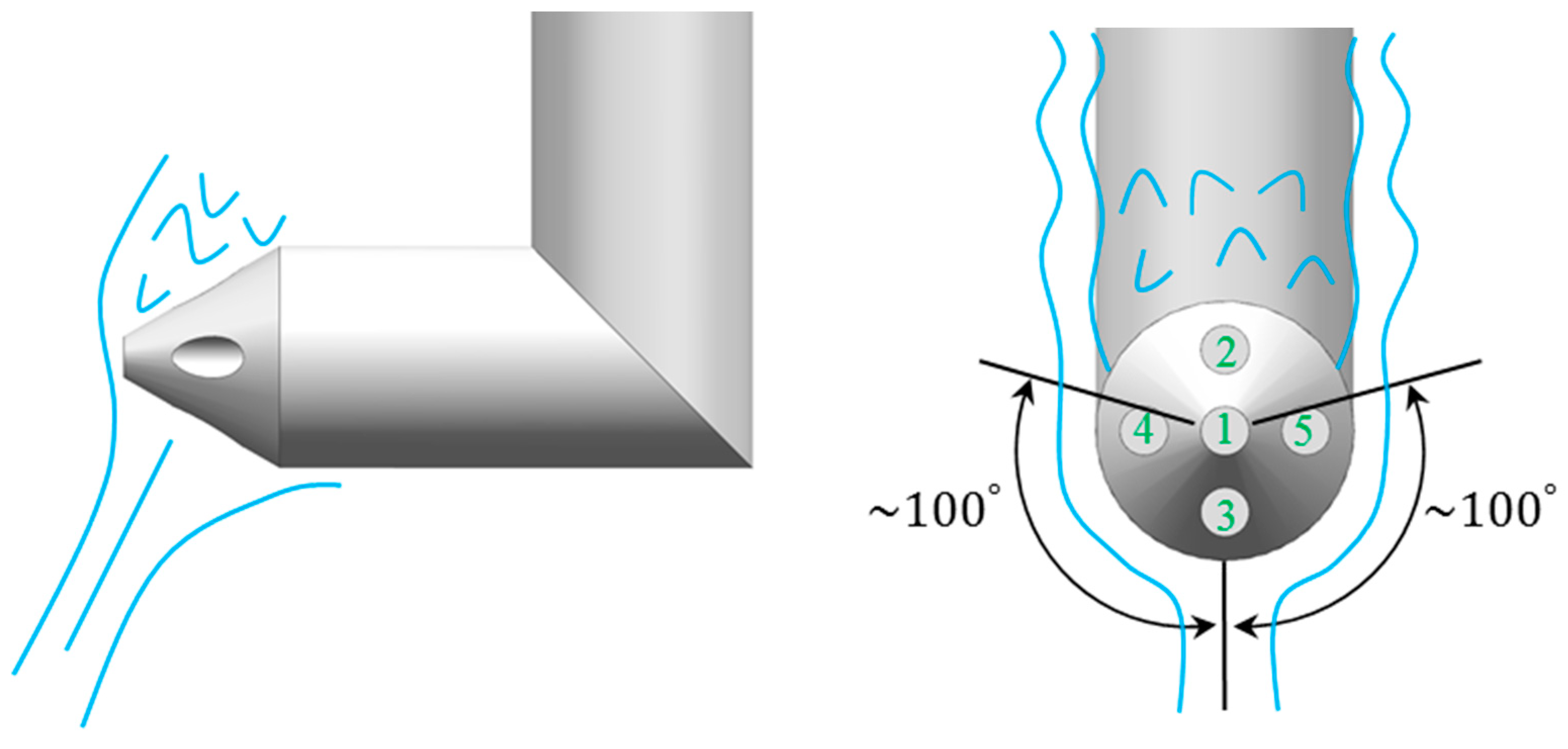
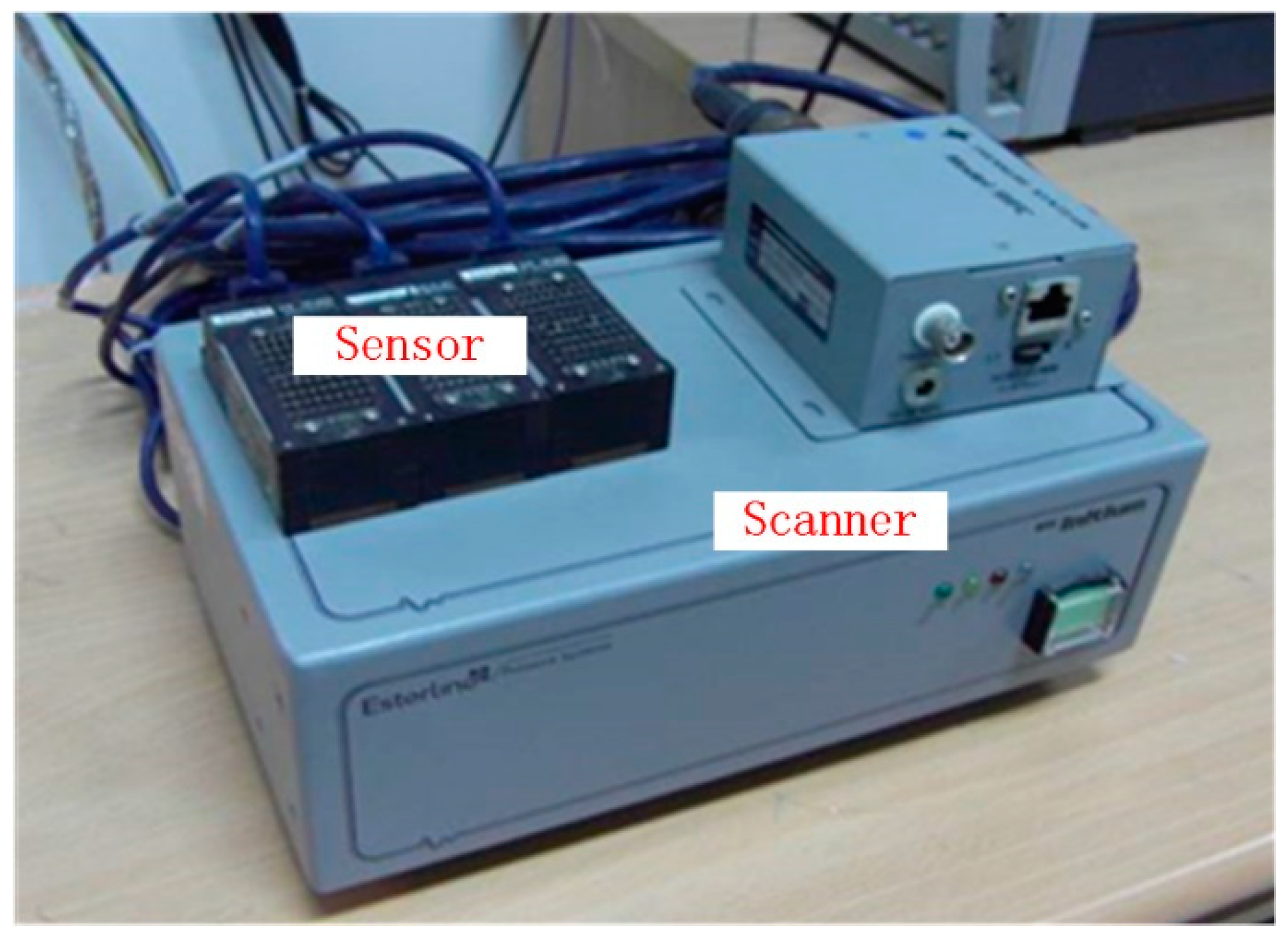

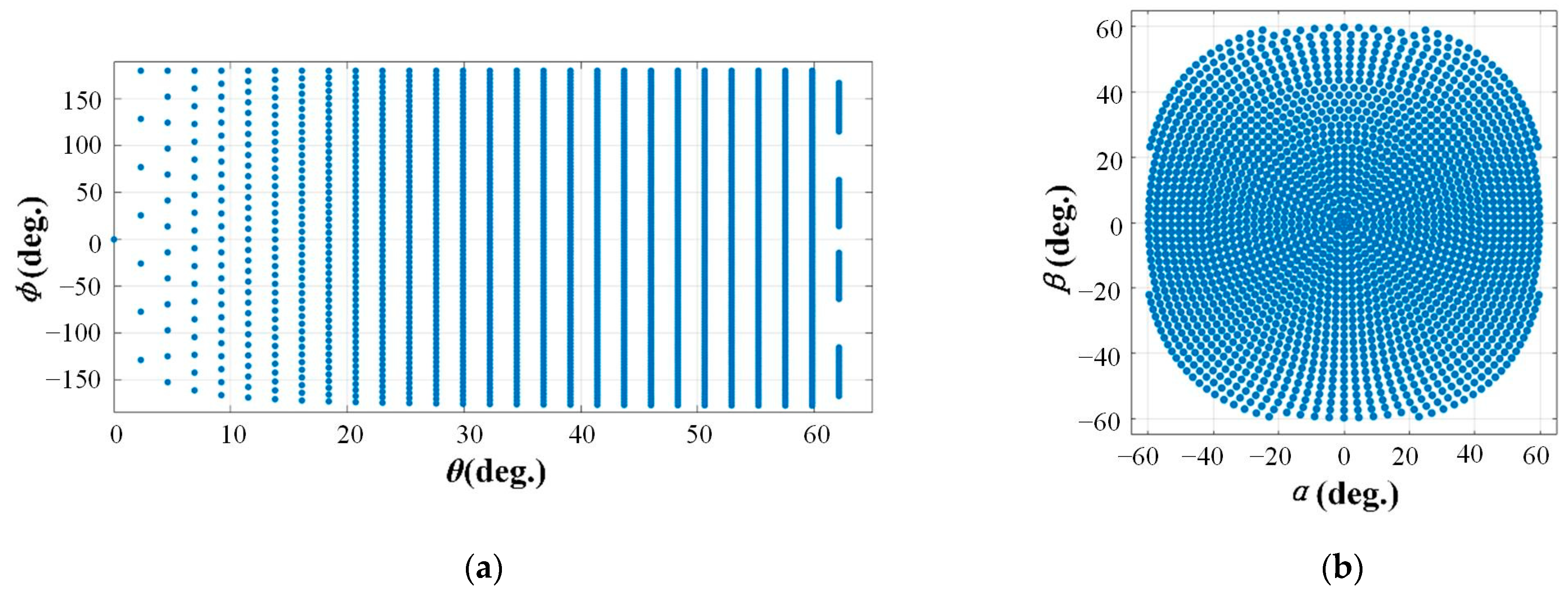


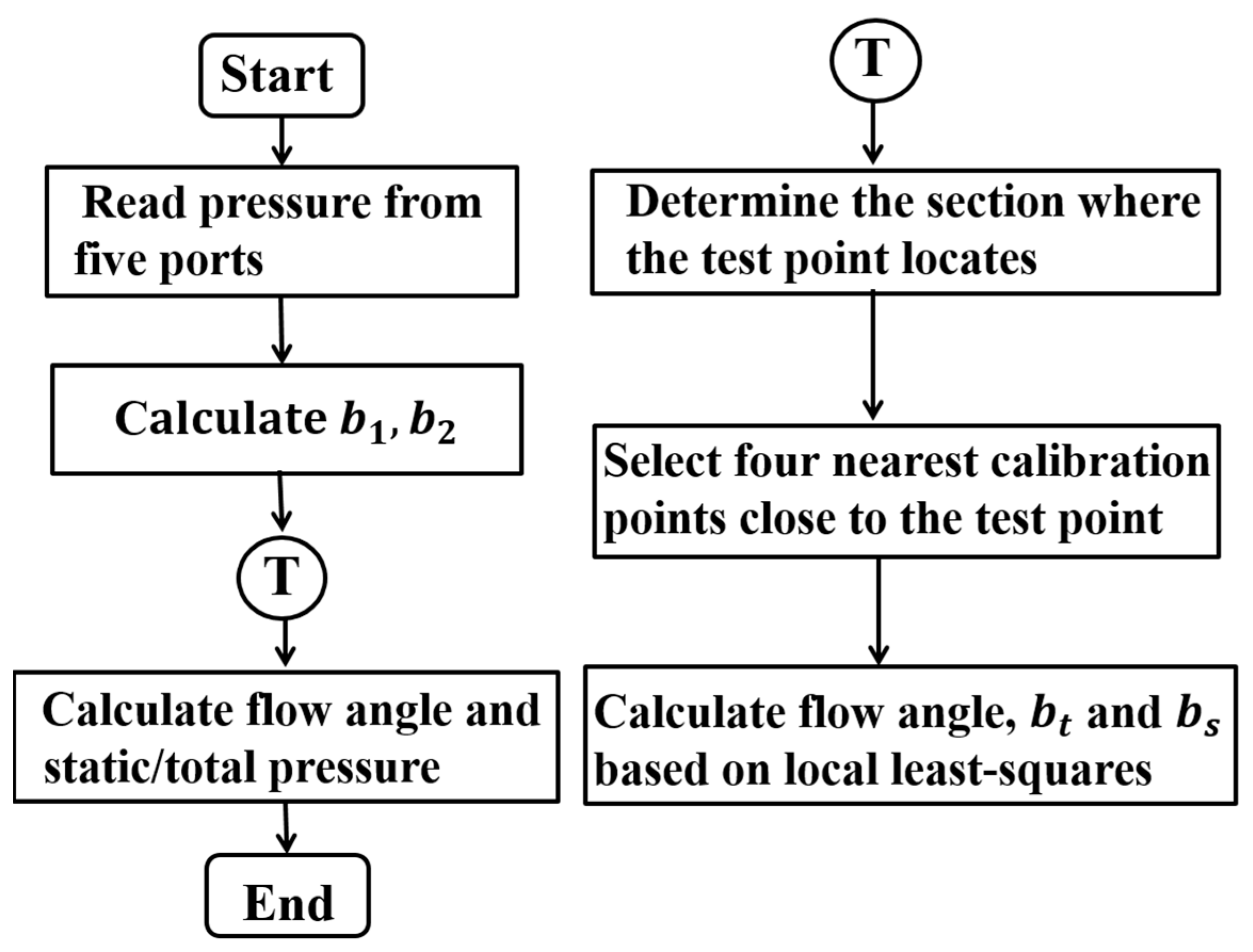
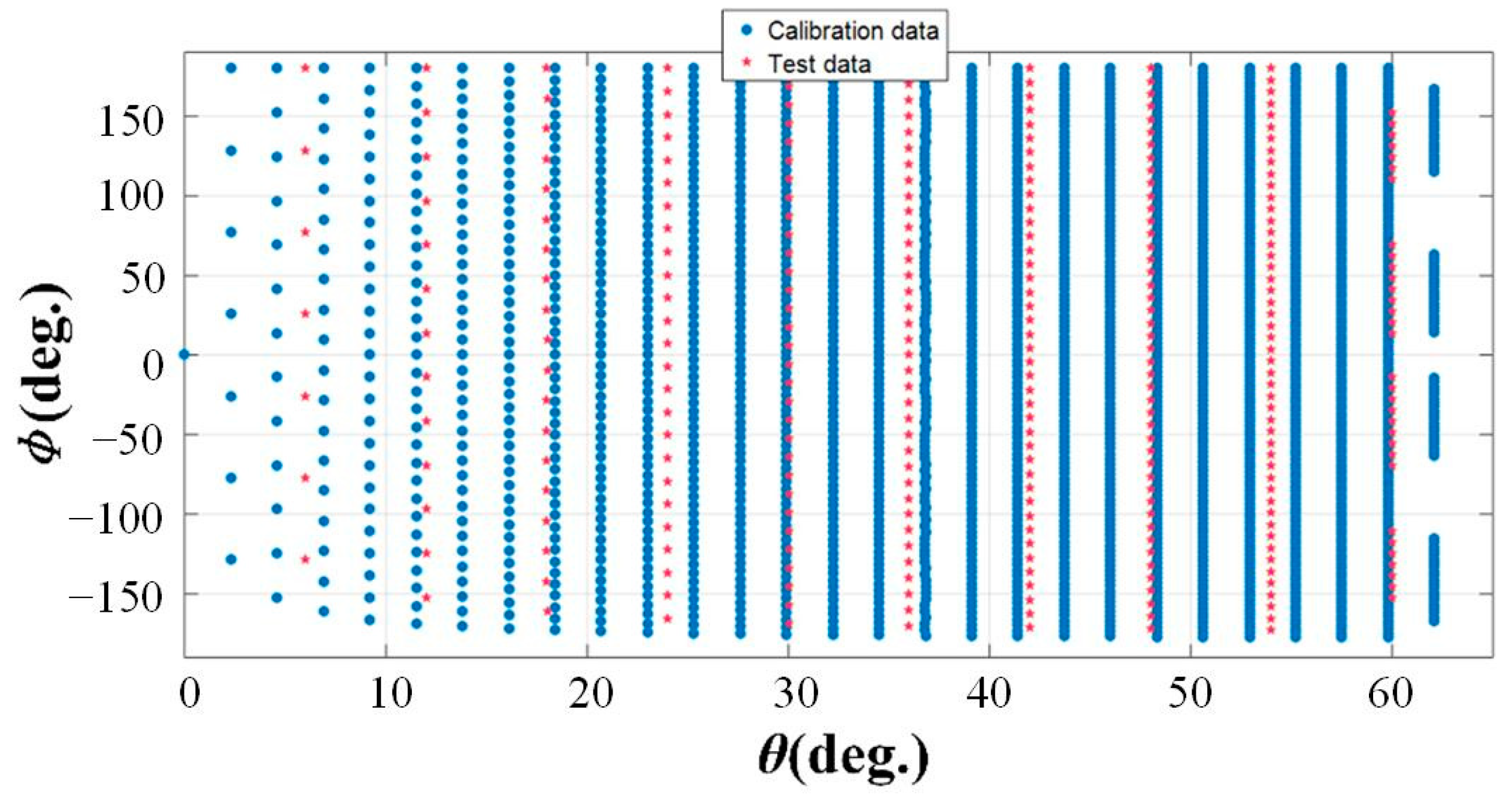
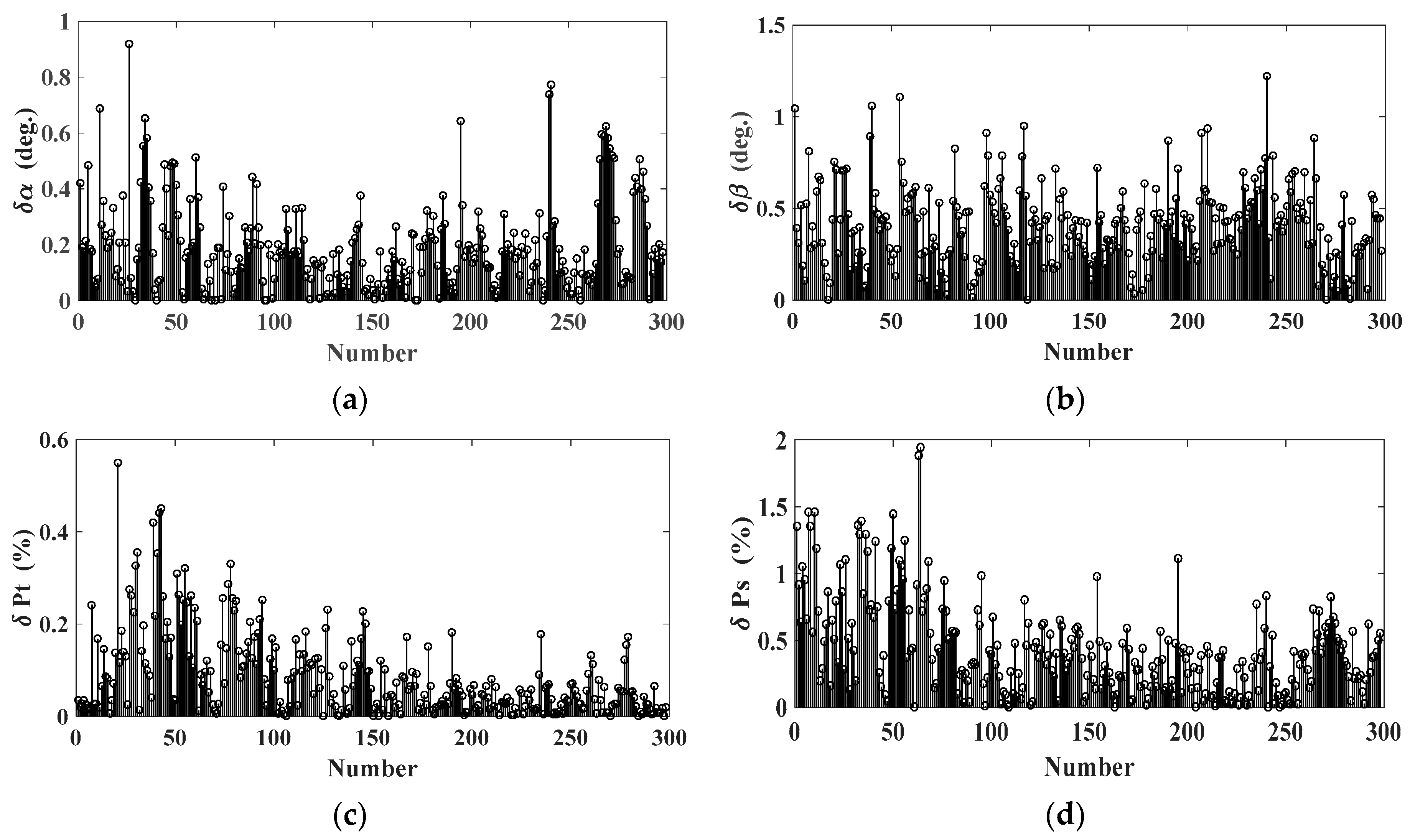

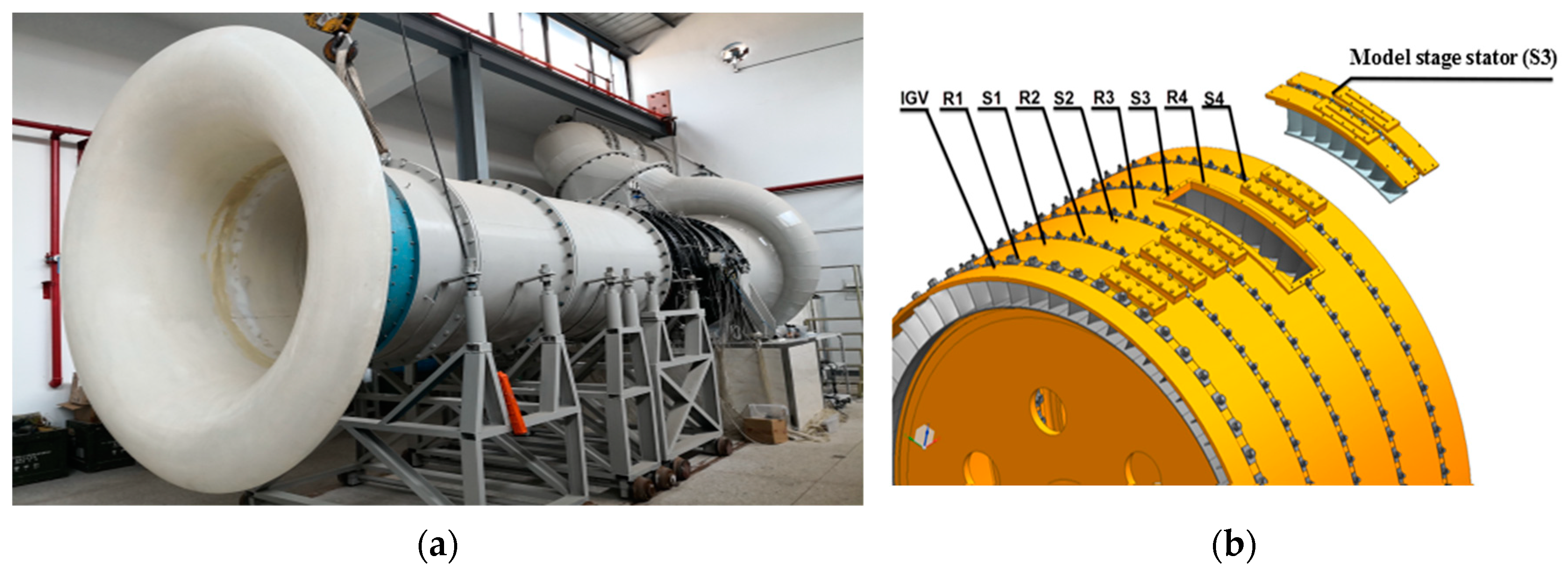


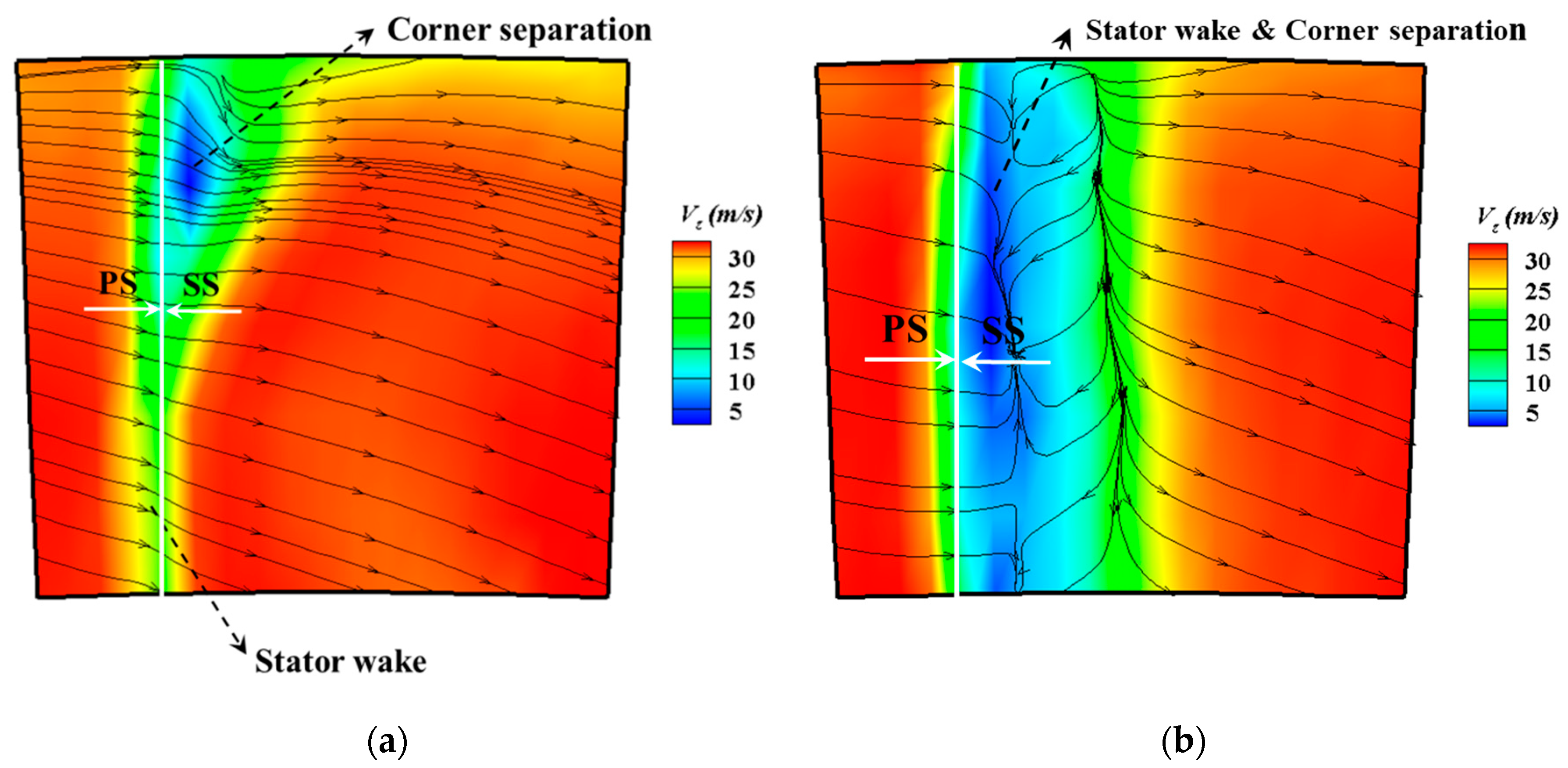
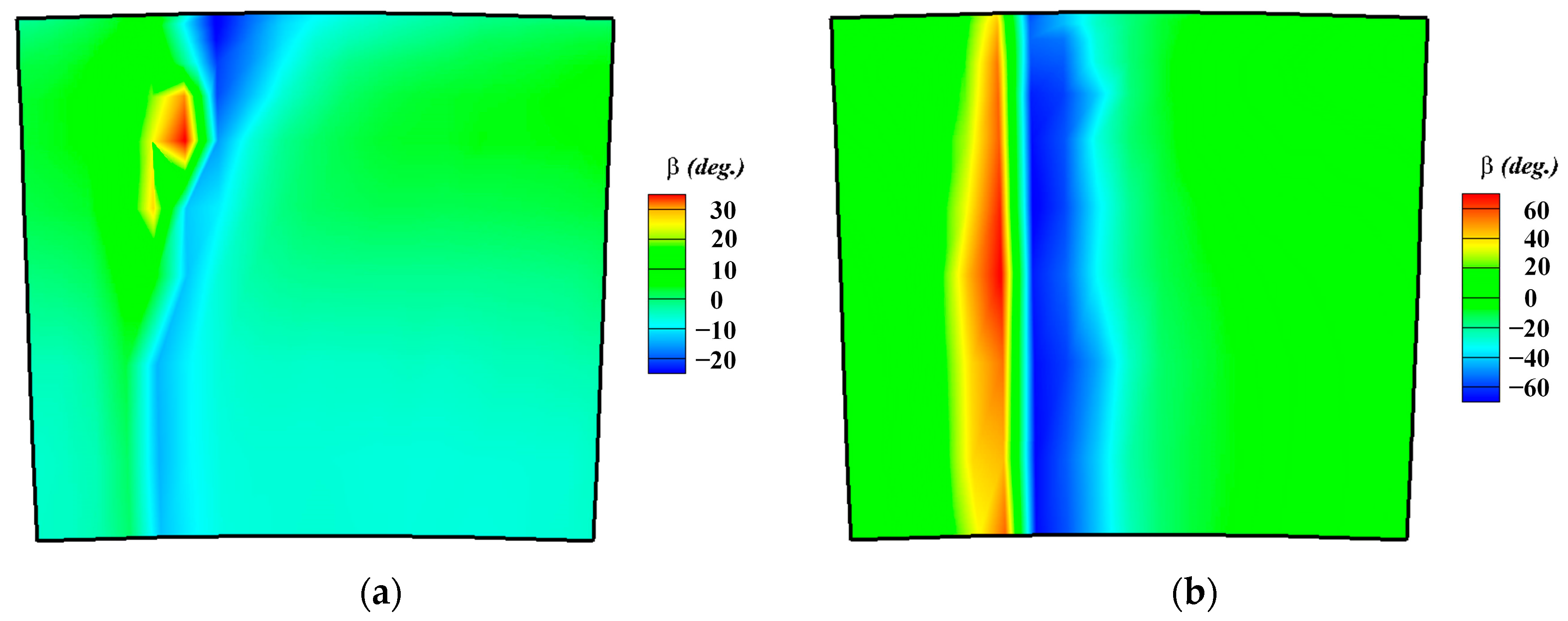
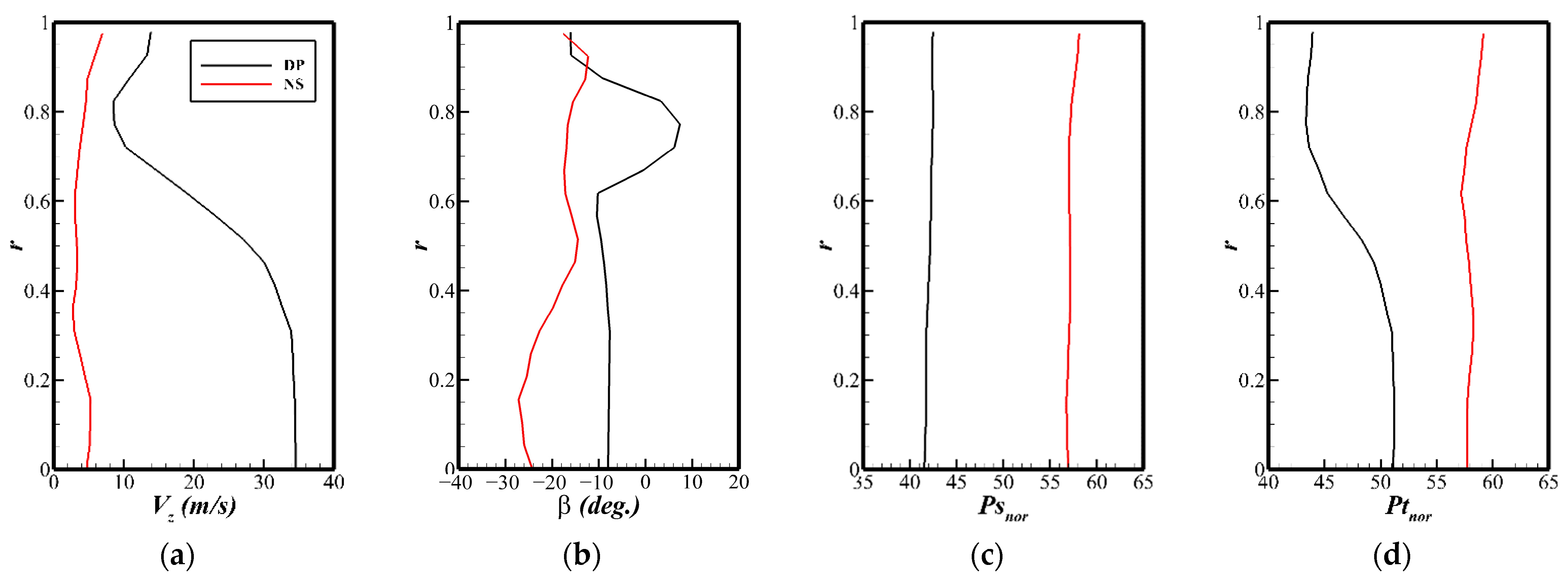
| Parameter | Value |
|---|---|
| Rotational speed range (rpm) | 0~1500 |
| Design speed/Test speed (rpm) | 900 |
| Casing diameter (mm) | 1500 |
| Hub-to-tip ratio | 0.88 |
| Blade number (inlet guide vane/rotor/stator) | 60/64/80 |
| Chord at midspan (mm, rotor/stator) | 92/74 |
| Axial gap (mm) | 20 |
Disclaimer/Publisher’s Note: The statements, opinions and data contained in all publications are solely those of the individual author(s) and contributor(s) and not of MDPI and/or the editor(s). MDPI and/or the editor(s) disclaim responsibility for any injury to people or property resulting from any ideas, methods, instructions or products referred to in the content. |
© 2023 by the authors. Licensee MDPI, Basel, Switzerland. This article is an open access article distributed under the terms and conditions of the Creative Commons Attribution (CC BY) license (https://creativecommons.org/licenses/by/4.0/).
Share and Cite
Ma, S.; Hu, J.; Wang, X.; Ji, J. The Application of a Laser-Printed Miniature Five-Hole Probe in the End-Wall Flow Measurement of a Multistage Axial Compressor. Aerospace 2023, 10, 1020. https://doi.org/10.3390/aerospace10121020
Ma S, Hu J, Wang X, Ji J. The Application of a Laser-Printed Miniature Five-Hole Probe in the End-Wall Flow Measurement of a Multistage Axial Compressor. Aerospace. 2023; 10(12):1020. https://doi.org/10.3390/aerospace10121020
Chicago/Turabian StyleMa, Shuai, Jun Hu, Xuegao Wang, and Jiajia Ji. 2023. "The Application of a Laser-Printed Miniature Five-Hole Probe in the End-Wall Flow Measurement of a Multistage Axial Compressor" Aerospace 10, no. 12: 1020. https://doi.org/10.3390/aerospace10121020
APA StyleMa, S., Hu, J., Wang, X., & Ji, J. (2023). The Application of a Laser-Printed Miniature Five-Hole Probe in the End-Wall Flow Measurement of a Multistage Axial Compressor. Aerospace, 10(12), 1020. https://doi.org/10.3390/aerospace10121020





